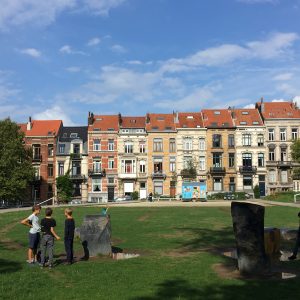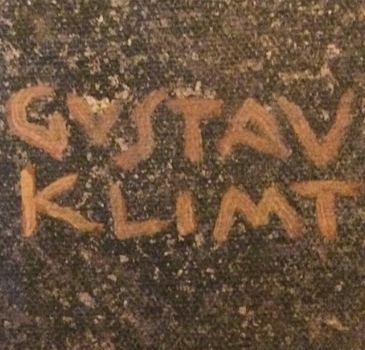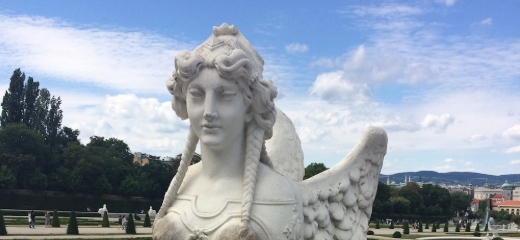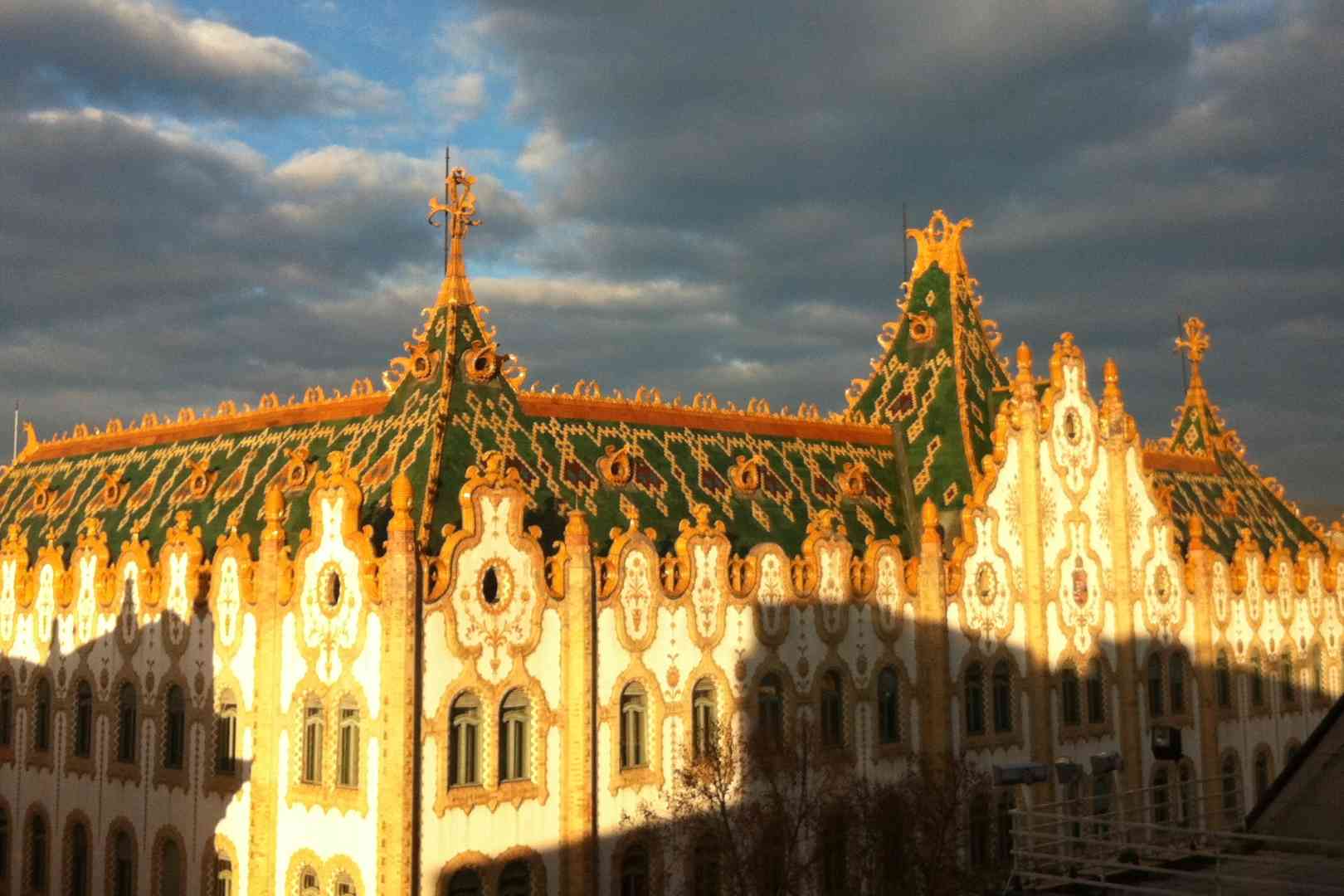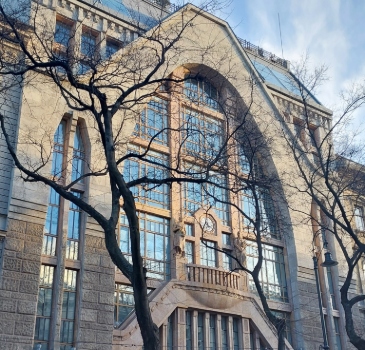A dazzling exhibition celebrating Hungarian poster art and the rich material culture of the Art Nouveau era is opening this Friday at the Hungarian National Gallery. Titled The Art of Life – Art Nouveau Posters and Material Culture of the Hungarian Secession (1895–1914), the show is a key highlight of the Bartók Spring International Art Weeks.
This unique exhibition offers a rare glimpse into the golden age of Hungarian visual culture, a time when poster art flourished as a defining feature of modern life. It brings together around 120 masterworks, drawn primarily from the National Gallery’s extensive poster collection, alongside significant loans from the National Széchényi Library, the Museum of Applied Arts, and the Kiscell Museum.
A celebration of the Hungarian Secession:
The exhibition places particular emphasis on the Hungarian Secession, the local manifestation of the broader Art Nouveau movement. Art Nouveau—or Szecesszió in Hungarian—was the first modern art style to attempt a complete integration of art into everyday life. This ideal is vividly represented through not just posters, but also furniture, household items, and decorative objects that collectively recreate the spirit of the era.
Poster art, a quintessential medium of the time, emerged in the late 19th century on the bustling streets of Paris and London. In Hungary, this new form quickly took root and thrived, producing work of lasting international significance. Far from being mere advertisements, these posters were expressions of urban sophistication, artistic innovation, and the new rhythms of metropolitan life.
Artists and atmosphere:
Visitors will encounter works by renowned painters such as József Rippl-Rónai, János Vaszary, and Károly Ferenczy, as well as iconic poster designers like Géza Faragó, Mihály Biró, Ferenc Helbing, and Márton Tuszkay. These artists embraced the medium not only as a commercial tool, but also as a canvas for high art—rich with decorative flair, humor, and symbolic meaning.
The posters on display advertise everything from newspapers and theaters to cabarets, nightclubs, and consumer goods, reflecting the dynamic lifestyle of Hungary at the turn of the century. Through them, the exhibition brings to life scenes from bourgeois interiors, lively cafés, cosmopolitan nightlife, and the pleasures of thermal baths, cycling, and grand social balls.
The women of art nouveau:
One of the most striking and consistent motifs throughout the exhibition is the portrayal of women—captivating, confident, and diverse in their roles. Whether depicted as elegant ladies of high society, modern consumers, or ethereal muses, they convey the Art Nouveau ideal of beauty and the shifting gender roles of a changing society.
These feminine figures, often draped in flowing gowns or caught in moments of leisure, are rendered with delicate painterly techniques and graceful lines. Some posters charm with their elegance, while others delight through subtle humor or symbolic depth.
A timely tribute:
Despite the international recognition of early Hungarian poster art, this is the first comprehensive exhibition devoted to its exploration on such a scale. It not only highlights the genre’s artistic value but also situates it within the broader environmental design ethos of the Secession movement—where the boundary between fine and applied arts was intentionally blurred.
Curated by art historian Anikó Katona, the exhibition is accompanied by a bilingual catalog (Hungarian-English) and is supported by key cultural institutions, including the Hungarian National Museum’s Public Collection Center and the MVM Group, the event’s main sponsor.
The Art of Life will run until October 5, offering visitors a captivating journey through the “last golden years of peace” before the First World War—an era when art, life, and beauty were closely intertwined.
Full information at the Hungarian National Gallery website (click HERE).
Step into the Hungarian National Gallery and find respite from the Budapest summer heat, not just in its cool, marble halls, but also in a vibrant journey through art that shaped the very soul of the city. The current exhibition, the first of its kind, celebrates the pivotal role of Hungarian Art Nouveau poster art, a movement that didn’t just decorate Budapest but defined its feeling. Emerging at the tail end of the 19th century as a defiant response to the starkness of the Industrial Revolution, Art Nouveau sought to unite craftsmanship with modern production. It was a movement fueled by optimism for the future, one that blurred the lines between “fine art” and “decorative art,” breathing life and flowing lines into everyday objects.
The exhibition masterfully illustrates how posters became a dominant art form, a crucial part of late-19th-century metropolitan life and the rise of advertising. Curated by art historian Anikó Katona, this comprehensive display features over 120 works from celebrated Hungarian painters like József Rippl-Rónai and Károly Ferenczy, alongside specialist poster artists such as Mihály Biró. These posters, with their characteristic flowing lines and subtle colors, did more than just sell products; they captured the essence of Budapest’s middle-class life. They evoke the lively atmosphere of coffeehouses, the popular pastime of visiting spas, and the burgeoning social scene of cabarets and nightclubs, especially for suburban women. This collection is a visual time capsule, showing how a groundbreaking artistic movement, empowered by new print technologies like Cheret’s “three stone lithographic process,” illuminated the streets and captured the imagination of a city on the rise.
For those looking to explore Budapest’s Art Nouveau treasures beyond the museum walls, private tours and curated experiences are best found at artnouveau.club. This platform offers insider access to the city’s architectural gems, hidden interiors, and decorative arts from the Secession era. Whether you’re planning a dedicated Art Nouveau trip or simply want to enrich your visit, the site provides updates on exhibitions, events, and local news related to Hungarian Art Nouveau. You can also submit a request directly through the page to organize personalized tours or cultural experiences.


